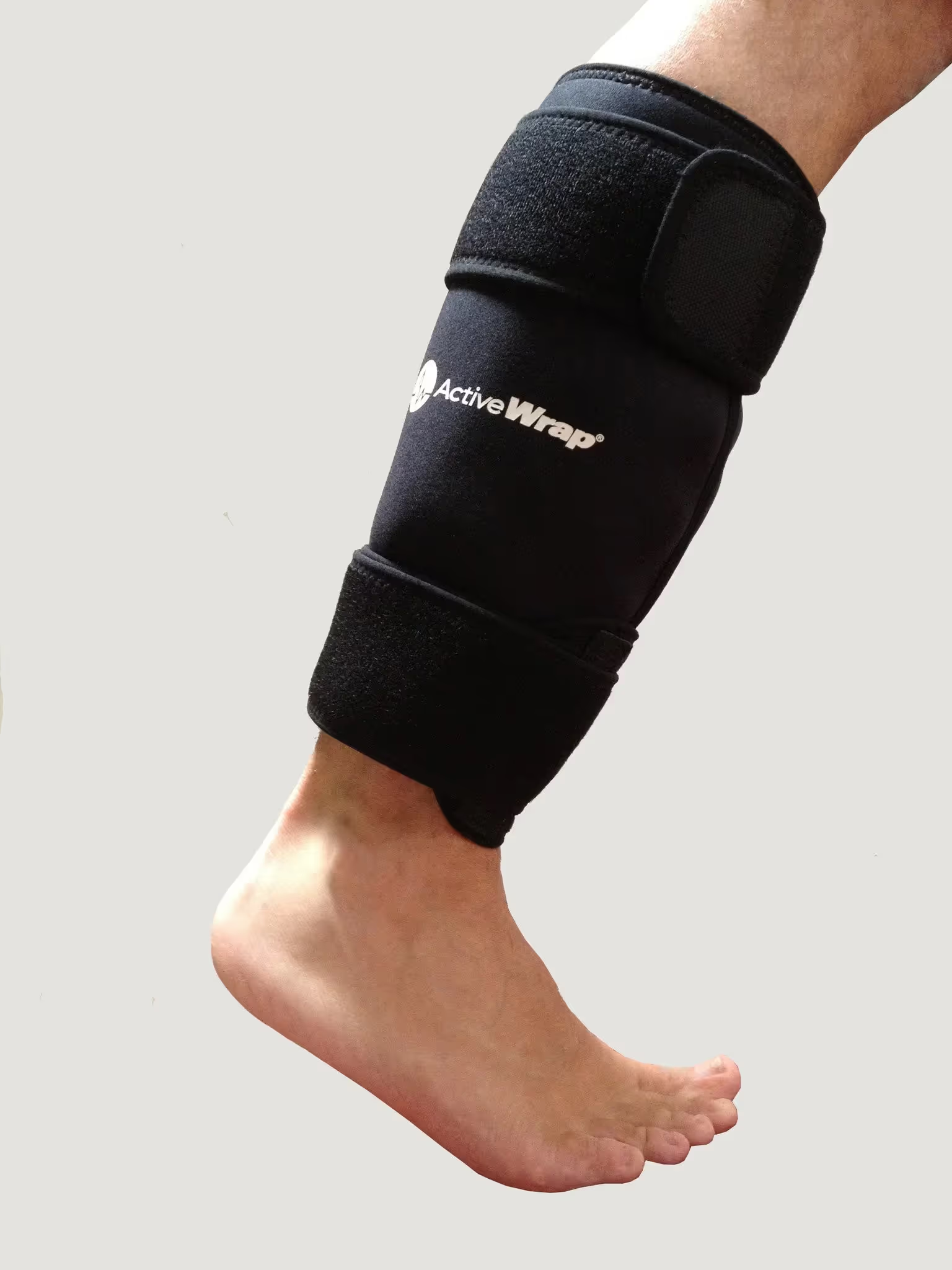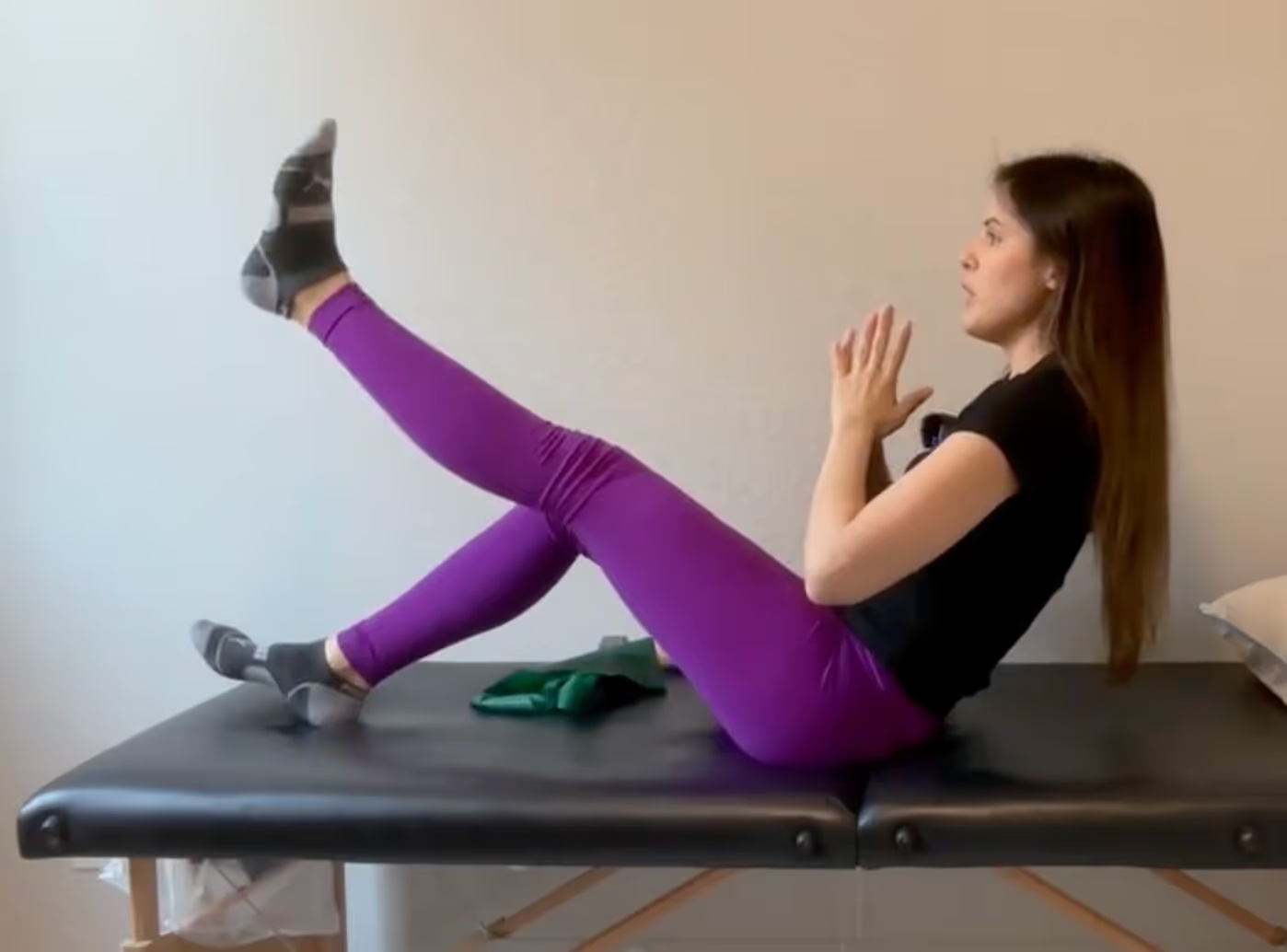Knee replacement surgery is a common procedure that is performed to treat patients with severe arthritis or other knee-related conditions. Although the surgery can provide relief with arthritis pain and improve mobility, it may cause scar tissue to form in the knee joint causing range of motion limitations. Scar tissue is a natural part of the healing process, but excessive buildup can limit mobility and cause pain. The easiest way to reduce scar tissue is by knowing exactly what to do before it forms. This article will explore the various techniques and methods that can be used to break up scar tissue after knee replacement surgery.
What is scar tissue?
Scar tissue is a natural part of the healing process that occurs after an injury or surgery. It is made up of collagen fibers that form a dense network of tissue, which helps to repair damaged tissue. It is usually thicker and less flexible than normal tissue, which can make it difficult to move the affected joint.
Scar tissue is a type of connective tissue that forms in response to injury or trauma in the body. It is composed of a fibrous protein called collagen, which is produced by cells called fibroblasts. It serves as a temporary patch to repair damaged tissue and restore strength to the affected area.
When tissue is injured, the body responds by sending an inflammatory response to the area. This inflammatory response is essential to the healing process, as it helps to remove dead tissue and promote the formation of new tissue. However, sometimes the inflammatory response is excessive, causing many inflammatory cells to constantly flood the area. The specific inflammatory cells that we are worried about in regards to scar tissue are called fibroblasts. Excessive fibroblasts cause the formation of excess scar tissue. In the case of a knee replacement, the inflammatory response will be excessive, which is why it is important to ice, elevate and do your physical therapy exercises as prescribed.
Scar tissue can occur in many different parts of the body after an injury, including the skin, muscles, and organs. In the context of knee replacement surgery, scar tissue can form in the knee joint as a result of the surgical incision and trauma to the surrounding tissue.
While scar tissue is an important part of the healing process, it can also cause problems if it becomes excessive. Scar tissue can limit mobility and range of motion, cause pain, and even lead to the failure of a knee replacement implant. Therefore, it is important to manage scar tissue buildup after knee replacement surgery to prevent these complications.
Why does scar tissue form after knee replacement surgery?
Knee replacement surgery involves removing damaged cartilage and bone from the knee joint and replacing it with an artificial joint. This process can cause inflammation and tissue damage, which triggers the body's natural healing response. Scar tissue forms as a result of this healing process, and can limit mobility and cause pain.
In the case of knee replacement surgery, the procedure involves removing the damaged joint and replacing it with an artificial joint made of metal, plastic, or ceramic components. During the healing process, the body produces scar tissue around the artificial joint as it tries to integrate the new joint with the surrounding tissues.
However, in some cases, excessive scar tissue formation can occur, leading to a condition called "arthrofibrosis," where the scar tissue becomes thick and stiff, restricting movement in the knee joint. This can be managed with physical therapy and, in severe cases, surgery to remove the scar tissue.
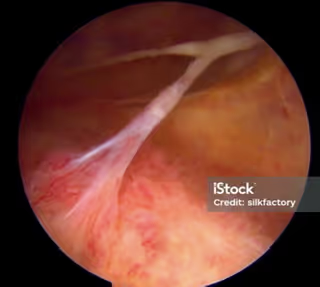

If you are struggling with knee bending, please look into my Knee Bending Course to help! We’ve had dozens of people make significant improvements in their range of motion with this course. It works!! Knee Bending Course
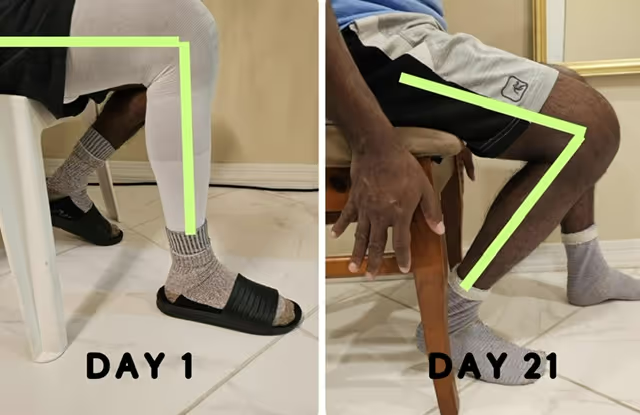
Symptoms of scar tissue
During the first 4 weeks post surgery, it is common to blame decreased range of motion on scar tissue. However, the limited range of motion is usually due to swelling, muscle pain, muscle guarding and nerve damage. If you are slowly making progress with your range of motion each week, typically, scar tissue is not going to be the culprit to your stiffness.
Symptoms of scar tissue after knee replacement surgery can vary, but typically within the first 3 months after surgery, the symptom is limited range of motion. If your knee is not moving past a certain threshold for several weeks in a row, you might have excessive scar tissue build up. The issue with this is when you are stuck at a certain point with your knee bending, it is only natural for scar tissue to build and build causing more difficulty with stretching and moving the knee. It is a vicious cycle.
Patients may also experience a popping or clicking sensation when moving the knee joint, but this is considered normal as long as your range of motion is adequate and you do not have severe pain when the clicking occurs. Again, it is normal to have scar tissue in the knee after the surgery. In severe cases, scar tissue can cause the knee joint to become completely frozen, making it impossible to move the leg.

How to avoid scar tissue right away
There are 2 main ways to reduce scar tissue right away after surgery: manage your pain/swelling and do slow, progressive exercises and stretches. Let me explain.
Manage pain and swelling
Managing your pain and swelling is crucial to your recovery. This is the key element I talk about in my Knee Bending Course (which has proven to work for dozens of people to improve their knee bending). As we discussed earlier in this article, swelling is normal, but swelling has certain inflammatory cells in it that cause scar tissue. These calls are called fibroblasts. Fibroblasts are necessary to restore the integrity of the damaged tissues, however, too many fibroblasts can lead to excess scar tissue formation within the knee joint.
You might be thinking… okay, so how can i improve my swelling? Ice and elevate and most importantly, do not overdo your daily activities, exercises, stretches and PT.
Doing too much activity increases the pain and swelling, which causes more fibroblasts in the area. Also, the increased swelling causes more difficulty with bending the knee because the knee is so tight. It is so important to slowly add on activity overtime so you don’t cause excessive swelling. It is also so important for your physical therapist to do this too. Your physical therapist should not be causing extreme swelling and pain after each session. If this is happening, you will have more difficulty with stretching and obtaining that range of motion. If you are struggling with your PT, please look into the Post-Surgery Course to learn more about how to exercise and stretch appropriately.
Ice and elevate
Icing with elevation is a great way to decrease your pain and swelling. Ice works by constricting the blood vessels and reducing that excessive fluid into the knee. The more often you can reduce that excessive fluid in the knee, the better. Elevation with ice is key. Using gravity to assist with fluid movement is very helpful after a knee replacement.
See the picture below on how to elevate your leg properly. It is essential you elevate with the toes over nose level or foot over heart level, if you can tolerate this (some people have more pain with the leg up high).

Elevating with ice for 20 minutes every 1-2 hours is the general recommendation, unless you have been told otherwise. Always check with your surgeon before.
My recommendation for ice packs are the Active Wrap Ice Pack or the Polar Active Ice Machine. The Active Wrap Ice Pack is a professional grade ice pack that stays cold longer than any other ice pack on the market. The Polar Active Ice Machine is an ice machine that plugs into the wall and has constant cold relief for several hours.
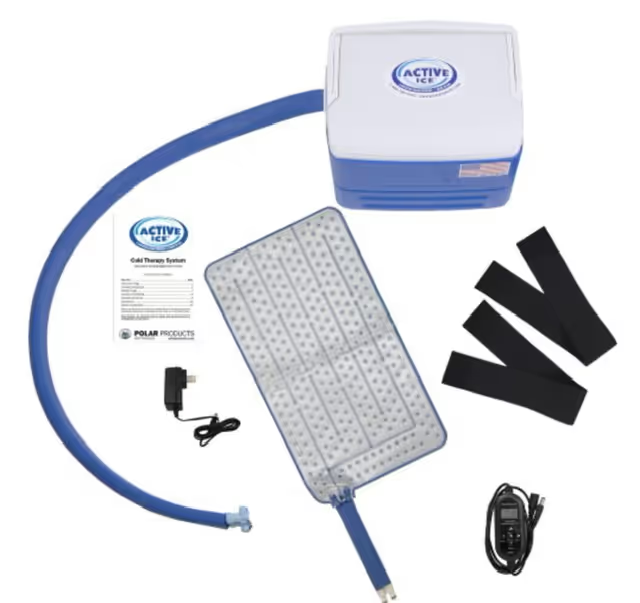
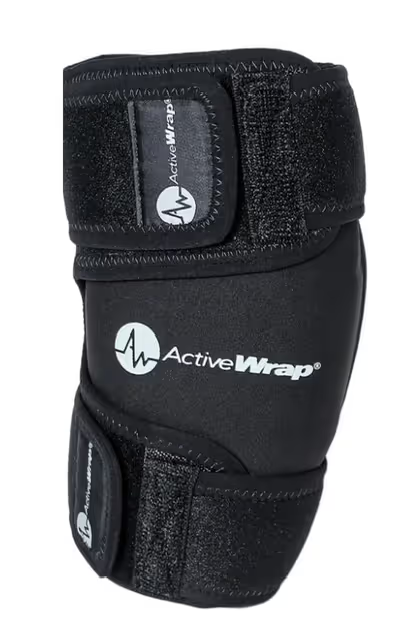
How to break up scar tissue after knee replacement surgery
There are some techniques that can be used to help break up scar tissue after total knee replacement surgery. Again, these are to be used within the first 6 weeks after surgery. These techniques may not be useful if you have dense scar tissue.
Physical therapy
Physical therapy is a non-invasive approach that involves exercises and other techniques to improve mobility and reduce pain. Physical therapists work with patients to create a customized exercise program that focuses on strengthening the muscles around the knee joint and improving range of motion. Some common physical therapy techniques for breaking up scar tissue after knee replacement surgery include:
Range of motion exercises
Range of motion exercises are designed to improve flexibility and mobility in the knee joint. These exercises involve moving the knee joint through a full range of motion, which can help to break up scar tissue and improve flexibility. Starting right away (unless you have been instructed not to) you can start range of motion exercises.
- Standing marches
- Standing mini squats
- Standing heel to bottom
- Laying heel slides
- Seated kicks
Stretching exercises
Stretching right away after your knee replacement surgery is going to be the best way to reduce scar tissue formation. You can combine stretching with range of motion exercises to improve your mobility. At the beginning of your recovery, you might notice that stretching is really painful. Not only do you have a lot of pain, but the increased swelling makes it very difficult to stretch the knee into flexion and extension. Try to slowly make the stretches longer each time you practice this.
Ice therapy
Ice therapy is a technique that involves applying ice to the knee joint to reduce inflammation and pain. Ice therapy can be used after physical therapy exercises to help reduce inflammation and promote healing. As discussed in above sections, ice is very effective in removing those fibroblasts that cause scar tissue to form. Icing every 1-2 hours for 20 minutes for the first 2 weeks is the general recommendation. After 2 weeks post surgery, most knee replacement patients can ice as needed.
Manual therapy
Manual therapy is a hands-on approach that involves mobilizing the soft tissue around the knee joint to improve mobility and reduce pain. It is unlikely manual therapy will actually break scar tissue, especially if it is dense scar tissue that has been there for several weeks. But manual therapy can be very helpful in getting the knee joint to move better for stretching and to relax tight muscles to help you participate in more intense stretches for knee bending.
Massage
Massage is a technique that involves applying pressure to the soft tissue around the knee joint to improve circulation and promote healing. Massage can help to relax the muscles around the knee to improve your ability to complete certain exercises or stretches that improve your range of motion.
You can even use a rolling pin or the roller ice (code DRSAM10 for 10% off) to help do some massage yourself. Massaging the quad can be very helpful in relieving pain and loosening up the knee.
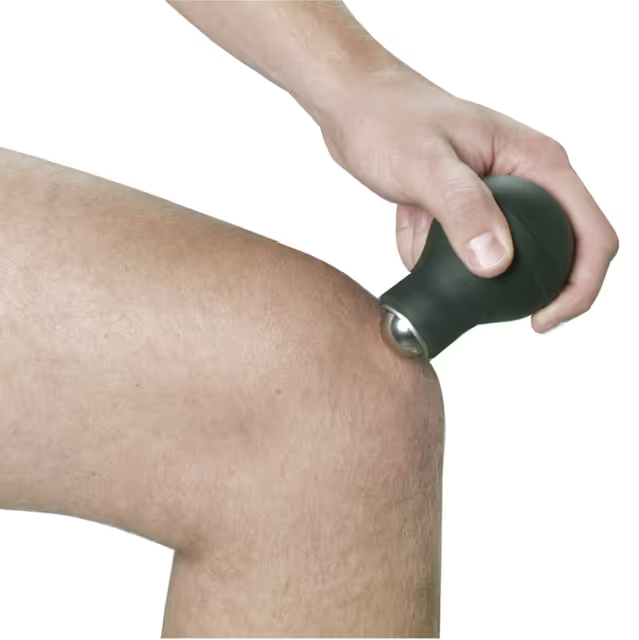
Joint mobilization
Joint mobilization is a technique that your physical therapist can do to help mod the joint within the joint capsule. The physical therapist will grab your knee bones and slowly move them around the help relax the muscles and stretch the joint capsule.
Surgical intervention
In some cases, surgical intervention may be necessary to break up scar tissue after a total knee replacement. This is usually considered a last resort after non-invasive approaches have failed. If you have not improved past 90 degrees of knee flexion by 6-8 weeks post surgery, you might consider undergoing one of the procedures below. Generally, surgeons will start with the manipulation under anesthesia since it does not involve opening the knee up again. Before considering surgical intervention, please try the Knee Bending Course first. This course has proven success.
Manipulation under anesthesia
Manipulation under anesthesia is a procedure that involves putting the patient under general anesthesia and then moving the knee joint through a full range of motion to break up scar tissue. This procedure is very effective in breaking up the tissue that is limiting the patients range of motion. If you want to read more in depth information about a manipulation under anesthesia, click here.
Arthroscopic surgery
Arthroscopic surgery is a minimally invasive procedure that involves making small incisions in the knee joint and using a camera and small instruments to remove scar tissue. This procedure can be effective in removing scar tissue that is causing pain and limiting mobility.
Total knee revision surgery
Total knee revision surgery is a procedure that involves removing the original knee replacement implant and replacing it with a new implant. This procedure may be necessary if scar tissue has caused the original implant to fail or if other non-invasive approaches have failed.

.avif)
